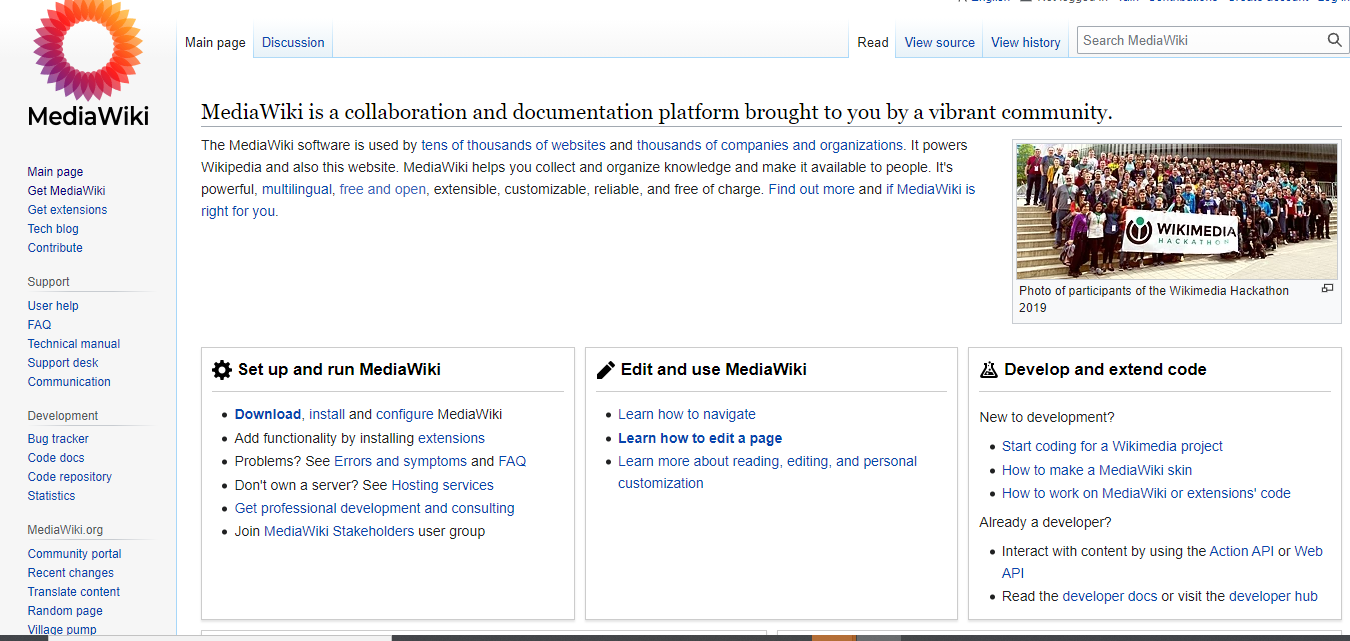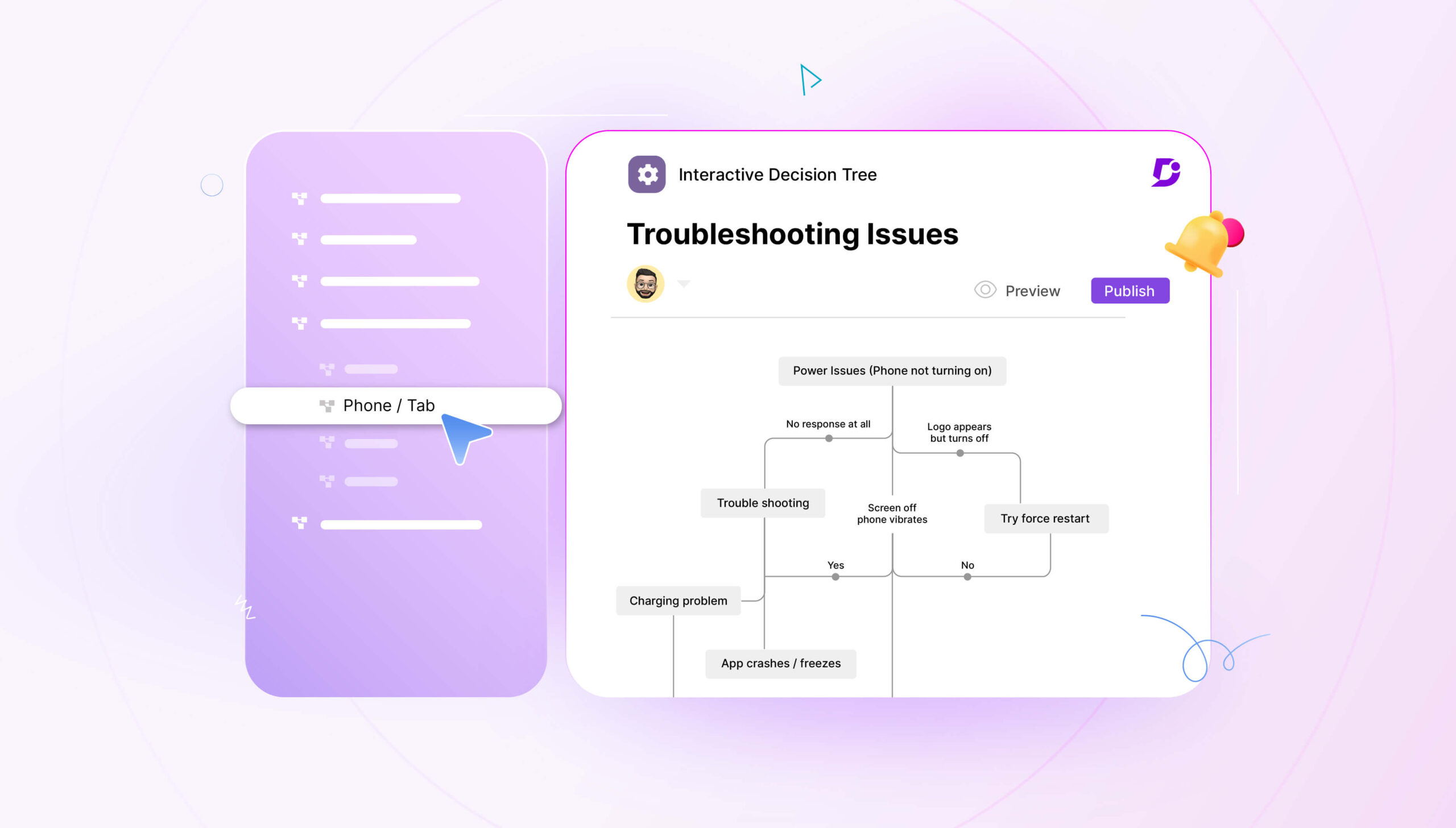Did you know that employees spend nearly 2 hours per day searching for and gathering information? This is a huge waste of time and effort that could be better spent on productive tasks, like completing mission-critical work or coming up with new ideas. The problem is, most company knowledge is stored in different places, lurking in email chains or hidden in Slack conversations. It’s no wonder that it takes employees so long to retrieve the information they need to do their jobs. This is where a powerful internal wiki comes into play.
What is an internal wiki?
Also known as a corporate wiki, an internal wiki is a place where employees can store, share and collaborate on content. It allows your resident experts to contribute their knowledge to a centralized place and to collaborate effortlessly with other team members.
An internal wiki can contain anything you want it to. From standard operating procedures to training manuals to customer support information, your wiki becomes the single source of truth for everyone in your company.

Example of Standard Operating Procedure
Your wiki is maintained by the employees themselves as they add and maintain content collectively. A wiki takes virtually no effort to set up and grows organically with your team, becoming a crucial business asset for your company. There are many specialized software solutions out there to help you create your wiki.
Bonus Read: The Definitive Guide to Internal Knowledge Base Software
Types of wikis
There are two main types of wikis: Private and Public. While both are powered by the same software they serve very different use cases.
Private Wiki
Private Wiki is also called Internal Wiki. They are the central repository of the company’s information: proprietary data like
- Vacation policies,
- Company holidays,
- New job postings,
- Onboarding training materials,
- Work process,
- Employee information, and much more.
These Private wikis at large enterprise levels are called corporate wiki, which is mostly managed by a specific team, like knowledge sharing experts or allow all employees to contribute their knowledge.
Types of Private Wiki
- Company Wiki
- Team Wiki
- Partner and contractors Wiki
Public Wiki
Public Wiki is also called External Wiki. They are sites developed for self-serving customers or audiences across the internet. The best example of a Public wiki is the largest encyclopedia – Wikipedia itself. Here the knowledge collection is from various sources, any stakeholder can contribute to the public wiki.
At organizations, public wikis are gaining popularity as customer self-service help centers. With new modern alternatives to wiki software now you can have restrictions on the contributors. Where the site is contributed and fully maintained by the organization itself avoiding spamming.
Types of Public Wiki
- Customer-facing Wiki
- Product Wiki
- FAQ sites
Help customers help themselves instantly with a Knowledge Base!
Book a Demo
Benefits of an internal wiki
Here are just some of the benefits of creating a wiki is a worthwhile investment:
1. Faster employee onboarding
When new hires start at your company, they have endless questions that they usually have to ask other employees to answer. It takes them a while to get up to speed and for the first few months, they are less than productive. With a wiki, you can direct your new hires to take advantage of the helpful content which answers their questions instantly.
2. More productive employees
When you have your company knowledge centralized in a wiki, employees spend less time searching for information, and there is less duplication of work. A wiki is a mine of information that employees can consult and they can also share the knowledge that they find valuable.
Read more: How Knowledge Management Application Tools Improve Employee Productivity
3. Retaining business knowledge
A sad fact of life is that many employees leave their jobs or even just go on vacation. Other employees have to spend time learning what they knew from the very beginning, resulting in wasted time and knowledge loss. Valuable company knowledge is retained in the wiki as employees document what they know, for the benefit of both current and future employees.
Also Read: Ultimate Guide To Build a Business Wiki
4. Collaboration
Knowledge needs to be shared in an organization. To enhance a knowledge-sharing culture and improve collaboration, the employees need the right platform. Yes, the internal wiki is the right choice to improve collaboration.
5. Security
Data security is a big concern for all organizations. Company information stored on the private wiki is more secure than the files being stored on hard disks. With new technologies, you can add more layers of security to mitigate the risk of information leaks.
6. Organized Structure
The information stored on an internal wiki powered by the latest wiki platforms allows the contributor to taxonomically arrange the contents and add a hierarchy of content structure. This allows the users to easily navigate through the content without getting lost.
Now you know the value of an internal wiki and why it’s a worthwhile investment, how do you go about implementing one for your company?
How to create an internal wiki?
Here is the step-by-step guide to creating your wiki
1. Organize your information architecture
Once you’ve selected your wiki solution, you’ll need to spend time creating categories or sections for your wiki. You don’t want to start adding content to a blank slate, or it will quickly become a disorganized mess.
You’ll want to choose some high-level categories for your wiki.
- HR
- Company-wide
- Engineering Support
- Finance
The list goes on. The important thing is to give your employees sections into which they can upload content in an organized manner. Make sure that your information architecture makes sense to a wide variety of people – get several coworkers to review it if you can. Your categories will be how employees navigate the wiki apart from search and they need to reflect company priorities. You might want to let each team structure their own wiki section in a way that meets their needs. No two teams are alike, and each team has its way of working that should be reflected in the wiki.
2. Start importing or creating content
Once you’ve created your categories for your wiki you can start importing content from another tool such as Microsoft Word or Google Docs. Make sure you choose the right wiki software with import options. If you don’t have any content to import, you can start creating pages in your wiki. Get started on your content so that other employees have an example from which to work. Make sure you have all your new content in place before you officially launch the wiki. Some popular documentation includes a company handbook and a Getting Started with the wiki guide.
3. Plan the launch of your wiki
You’ll need to decide if you’re going to roll out your wiki to a specific team or introduce it to the whole company at once. If you’re rolling out to a single team, they can start exploring the product and creating their own subcategories. Then, when you finally get around to bringing in the whole company, this team can provide a benchmark for others to follow when building their wiki content.
You can even provide training to your team to help them get up to speed with the software. If you decide to roll out your wiki to the whole company at the same time, don’t forget to ensure that everyone is introduced to your wiki management process to help you control contributions. You can appoint knowledge ambassadors that lead their team’s contributions to the wiki and to help if anyone has problems.
4. Configure who has access to what content
When you launch your wiki, it’s likely that you’ll want some content to remain private or to be read-only for your team members. Spend time configuring access permissions to your wiki. Think about: What information do you want to make public and what should be private? Which team members should be able to edit your content and post new articles? Who should have access to the account settings of your wiki? Choose wiki software that makes it easy to control who has access to different parts of your wiki.
5. Launch your wiki
If your company has never had a wiki before, it’s likely you’ll need to spend some time communicating the value of a wiki and what difference it makes to your business operations. When you launch your wiki, you should make a public announcement to the team or company that you are asking to use the software. Make it clear why you are implementing a wiki, introduce the wiki to your team, and explain how each team member should contribute content.
Start the ball rolling by contributing content yourself and demonstrating how the wiki should work. When you’ve got a decent amount of content, make sure you interlink your pages to help your team explore your wiki. Voila! Your wiki should be up and running, and become a veritable goldmine of information that your employees can consult when they have questions.
Choosing the right internal wiki software
The next step to creating a wiki is to decide what software to invest in. Here are the top features you should look for when selecting your wiki:
- Easy and intuitive search for finding content
- Sensible content hierarchy organized into sections
- Interlinking between pages to connect your content
- Integrations with other popular tools
- Access and rights management to control who can see your content
There are some preferred solid wiki SaaS solutions out there to get you started with your wiki.
Top Internal Wiki Software & Tools
1.Document360
Document360 is an easy-to-use internal wiki software that allows your team to create a knowledge base, organize, collaborate and integrate with any application.

An intuitive knowledge base software to easily add your content and integrate it with any application. Give Document360 a try!
Get Started
2. Nuclino
Nuclino is a modern internal wiki designed for fast and collaborative knowledge sharing. It offers a clean, user-friendly interface that’s easy to navigate and requires little training. Teams can work together in real time, keeping content organized and up to date.

3. DokuWiki
DokuWiki is a popular, open-source tool for creating a corporate wiki. Contrary to other wiki-creation tools, it doesn’t require any database running behind it.

4. Mediawiki
MediaWiki is one of the very first wikis developed and is mostly used by larger enterprises. It is very customizable but not for someone new to documentation. It requires expert support to set it up. Take your time to evaluate a few different solutions until you find one that meets your needs.

Challenges of using a Traditional internal wiki
There are some challenges associated with setting up a traditional internal wiki and will be difficult to manage when your team grows.
Disorganized content
Wikis have the potential to become unmanageable over time. Employees add content without proper organization and then it’s hard for people to browse the content. If your wiki is a mess, then employees will be likely to stop using it.
Hard for employees to contribute
if you don’t choose a wiki software that is easy to use, you’ll find your employees running into a barrier when it comes to contributing content. Employee-generated content is the lifeblood of your wiki, and without content contributions, your wiki will be useless.
Lack of analytics
In the absence of analytics, it’s hard to gauge the effectiveness of your wiki. You won’t be able to see which articles are popular or which ones need updating. If you lack access to the hard data, it’s difficult to improve your wiki and make it more user-friendly for your team.
Traditional wikis are hard to use and difficult for employees to contribute. When the systems aren’t easy to work with, it leads to declining usage within your company.
With Document360, we try to keep things modern, simple, and easy to use. It will be the central repository of your company’s information. We also integrate with the tools you already know, like Microsoft Team, Slack, and many more.
Final remarks
A wiki can be a valuable asset for your company, but it will only work if you have regular contributions and updates from team members. Make sure the wiki tool you choose makes it easy to author content so your wiki doesn’t become full of tumbleweed.
Spend some time communicating the value of the wiki to your company and provide incentives for employees to contribute. For example, you can reward the most prolific contributors and make it a team KPI. Get your team excited about your new wiki. After all, conserving company knowledge is a worthwhile investment, and a wiki should improve productivity.
Frequently Asked Questions
-
What is a corporate wiki?
A corporate wiki/ Company wiki is a collection of texts, sometimes referred to as articles, that cover a variety of topics. A corporation wiki is often kept online and includes several writers and contributors. A corporate wiki is a functioning series of articles, as opposed to a set of company processes, which are often written once and seldom updated. Similarly, rather than being entirely owned by HR, anybody may contribute. For certain businesses, wikis are often referred to as “knowledge bases.”
-
What should be in a wiki page?
- Understandability: Keep pages short, use simple language and avoid jargon. Aim your writing at the level of children.
- Structure: The wiki should be arranged to allow people to easily find the content they are looking for starting from the Main Page.
- Conflicting information: Information about current tagging recommendations should be consistent.
- Introduction: Pages should start with a short introductory paragraph comprising a few sentences.
- Categories: Group pages based on categories
- Internal Linking
-
What is a project wiki?
In project management, a wiki is an online text page that contains crucial project information that the entire team may access on demand.




 –
– 

